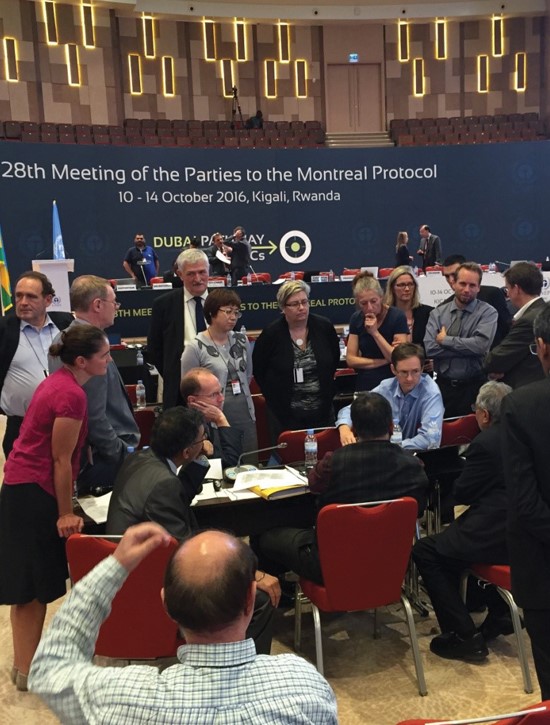Kigali HFC phase-down agreement reached – coming in from the cold
On the 15th of October this year, countries from around the world agreed to phase-down HFC production and imports under the Montreal Protocol on Substances that Deplete the Ozone Layer.
Proposals to phase-down HFCs under the Protocol had been made since 2009, but it was only in 2015 that countries decided to move ahead with negotiating an agreement. Negotiations on the shape of the agreement
took place over several meetings in 2016, culminating with the meeting in Kigali in October.
The agreement means that Australia and other developed countries, will need to cut HFC bulk imports by 10% in 2019, leading to a 85% reduction in 2036. Most developing countries (including China) will freeze their HFC
imports and production in 2024 and start their reduction steps in 2029.
The international agreement follows on from the domestic review of the Ozone Protection and Synthetic Greenhouse Gas Management Act 1989. As a result of the review, the Australian Government announced an HFC
phase-down starting in 2018. The international agreement complements the domestic HFC phase-down and means that all countries will be phasing out imports and production of HFCs.
Recent technology advances suggest that reducing our reliance on HFCs will not be as hard as it sounds. For motor vehicle air conditioning, HFO-1234yf or carbon dioxide systems are already available and being
imported into Australia. In Australia, this sector is the major user of HFCs (HFC-134a). In domestic split air conditioning systems, R32 (with a Global Warming Potential (GWP) of 680) is already replacing
the much higher GWP R-410A. With these two changes, and lower GWP blends on the horizon, we expect that meeting our requirements under the new agreement will be relatively smooth.
The next steps for the Australian Government are to introduce legislation in 2017 giving effect to a domestic phase-down of HFCs (ie establishing industry limits on a per year basis and developing a quota system for
importers) and then to ratify the amendment to the Montreal Protocol shortly thereafter. Ratification of a treaty (or an amendment to a treaty) involves a number of steps including undertaking a National Interest
Analysis and a Regulatory Impact Statement.
The Australian Government has supported an HFC phase-down under the Montreal Protocol for a number of years now, given the environmental benefit of such an approach, the expertise of the Montreal Protocol
institutions which are well placed to phase-down HFCs, much as it phased-out HCFCs and CFCs, and the development of new lower GWP and more energy efficient technologies. Australian industry and government
officials were prominently involved in agreeing the final outcome.
For further information, see www.environment.gov.au.

Small group consultations on the last day of negotiations around the Indian delegation with the USA, Australia, China and EU delegates.
 Contact Us
Contact Us About the ARC
About the ARC

